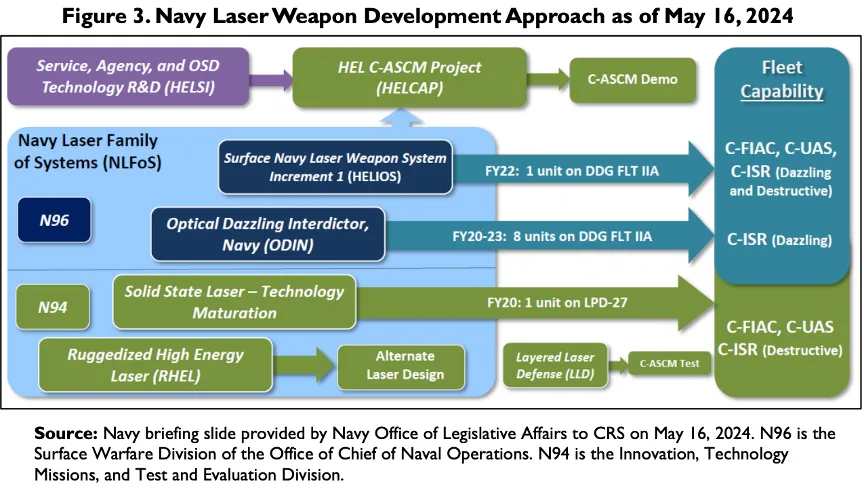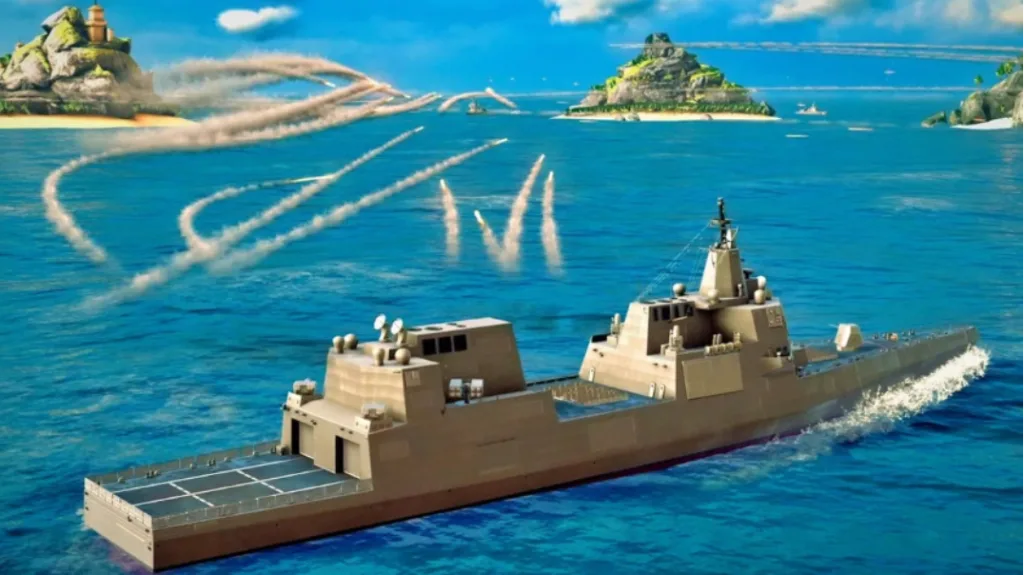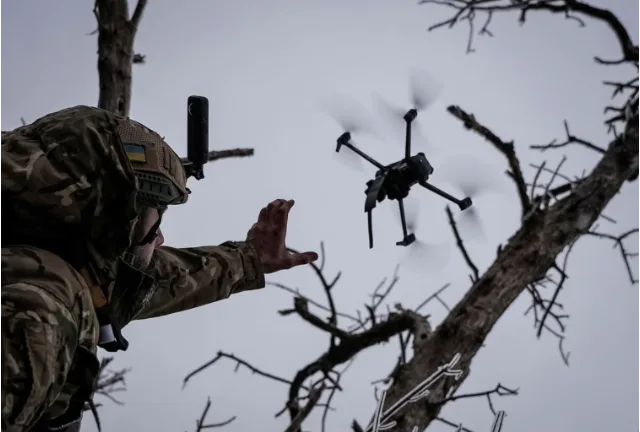This Week in Laser News – What’s Going on With HELs (Week of December 23rd 2024)
This week, CSU breaks ground on a new facility, Navy updates on DE and DDG(X), and the year in review for Ukraine entering 2025.
News roundup by Caleb Hoover
Monday December 23rd
Construction Equipment Guide.com published an article titled “Work Starts On $150M Laser Facility at Colorado State University”.
The article mentions that this new facility will come online in mid-2026. This facility is a collaboration with CSU in partnership with the U.S. Departments of Energy’s Fusion Energy Sciences program and Marvel Fusion a company that launched in 2023.
This new building will be known as the Advanced Technology Lasers for Applications and Science (ATLAS) Facility. A major topic of research there will be laser-driven fusion as a viable clean energy source.
Post Image – Ground breaking and facility concept (Picture source: CSU)


Tuesday December 24th
The United States Naval Institute (USNI) published an article this week covering the “Report to Congress on Navy Shipboard Lasers”.
As stated in USNI’s article:
“This report provides background information and issues for Congress on shipboard solid-state lasers (SSLs) that the Navy is developing for surface-ship self-defense. The Navy’s proposed FY2025 budget requests continued research and development funding for some of these efforts”
As the report states on page 2, there are two key limitations that Navy surface ships currently have in defending themselves against UAVs and anti-ship missiles: limited depth of magazine and unfavorable cost exchange ratios.
The report continues to say on the page 3 that U.S. and allied warship engagements in the Red Sea and Gulf of Aden remaining in progress since October 2023, has highlighted a vulnerability in these two areas.
Some individual engagement reports highlight this issue on page 4:
•February 13,2024 – CNO Adm Lisa Franchetti, reported 91+ shootdowns of 21 missiles and 70 drones
•February 18,2024 – A news broadcast states the Navy has fired more than 100 of their standard SAMs at the cost of $4M each.
•April 16,2024 – The U.S. Navy is nearly $1B in the hole after defending Israel from Iranian missiles.
The report then goes into a lot of historical development detail of Naval lasers in general. On Page 23, it picks back up with some more current developments about the High Energy Laser Scaling Initiative (HELSI). The following awards are outlined for HELSI from April 2020:
•nLight/Photonics [nLight/Nutronics], $48M award for a HEL device based on coherent beam combined technology
•Lockheed-Martin, $83M award for a spectral beam combined fiber laser prototype.
The paper then goes into some ”Issues for Congress” such as:
•Using current defenses, how well could Navy surface ships defend against an adversary like China?
Page 26 also has an interesting concern with the ONR from Feb 2023 stating that the Navy is moving very cautiously on DE since the eventual first program of record could cost up to $1B.
Perhaps the most telling portion of the report is summed up on page 30:
The committee is also concerned that DOD is using multi-million-dollar missile defense interceptors against $20,000 UAVs, rather than investing in directed energy systems whose cost per shot has the potential to be essentially de-minimis. Missile interceptor costs range from $10.0 million for an SM–3 Block IB missile to $22.0 million for an SM–3 Block IIA missile. At the same time, the budget for directed energy—where the cost of each shot could be a few dollars—has decreased from $1.65 billion in fiscal year 2023 to $789.0 million for fiscal year 2025. The Department also chose the fiscal year 2025 request to eliminate funding for production of the less-costly SM–3 Block IB, while holding production for the more expensive SM–3 Block IIA at the minimum sustaining rate of 12 per year.
Post Image – Figure 3 of Navy Shipboard Lasers

Thursday December 26th
19fortyfive.com published an article by Kris Osborne this week covering the “DDG(X): The Navy’s New Destroyer Could Fire Lasers and Hypersonic Missiles”
The article opens with this:
“The DDG(X) next-generation destroyer aims to revolutionize naval warfare with advanced technologies, including high-energy lasers, hypersonic missiles, increased Vertical Launch Systems, and the Integrated Power and Energy System (IPES)
The DDG(X) is expected to have some deliveries by 2030 and expected to have a 50% range increase, 120% longer station time, and 25% reduced fuel usage compared to current destroyers.
These ships are expected the cost $3.2B per ship which leaves critics questioning its cost effectiveness as compared to upgrading existing ships. If this plan goes as discussed, laser weapons are likely to make this ship a game changer.
Post Image – DDG(X) Concept from the article

Thursday December 26th
In a different sort of year-end wrap up this article covers some details about how the Ukrainian military has evolved over 2024 in key areas. Some summaries of these areas are below:
•Fighters and other aircraft – from the receipt of MiG-29s from Slovakia and Poland in early 2023, the Ukraine received F-16s (produced in the US) in August 2024 from Denmark and Netherlands.
•Missiles and artillery – Ukraine has received Army Tactical Missile Systems (ATACMS) and (40) High Mobility Artillery Rocket Systems (HIMARS) from the US along with Storm Shadow/SCALP missiles from Britain and France.
•Developing domestic technology – Much of the development here has been UAS from longer ranged systems able to strike 1,000 km from the border to a ton of developments in FPV drones and unmanned boat systems. There has also been development of what is likely called the Hrim-2 a ballistic missile systems with a range of 500 km. There is also the announcement of the Tryzub laser weapon.
•Air defense system – Many US-made systems such as Patriot, Iris-T, SAMP/T and Stinger have been provided along with German-made Gepard self-propelled anti-aircraft guns which have been highly effective against Iran-made Shahed suicide UAVs.
•Tanks and armored vehicles – Numerous armored platforms have been given to Ukraine including: Abrams tanks, T-72B tanks, Bradley IFVs, and Strykers and mine-resistant armored vehicles from the US and Challenger 2, Leopard tanks, Marder IFVs and AMX-10 RC AFVs from the UK, Germany, and France.
Post Image – Ukrainian soldier launches a drone

That’s all for this week. Keep reading or check back for updates.
